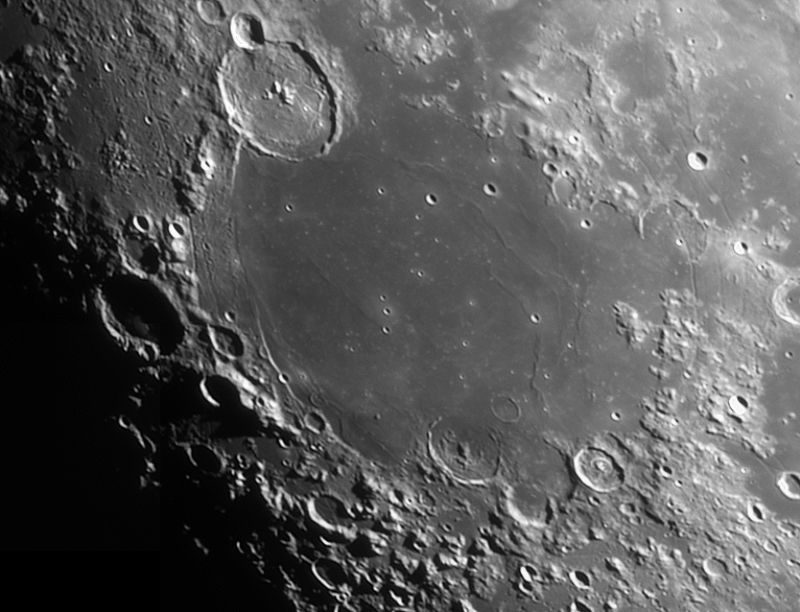Mare Humorum (the "Sea of Moisture") is an impact basin 425 kilometers across.
It was not sampled by the Apollo program, so a precise age has not been determined. However, geological mapping indicates that it is intermediate in age between the Imbrium and Nectaris Basins, suggesting an age of about 3.9 billion years. Humorum Basin is filled with a thick layer of mare basalt, believed to exceed 3 kilometers in thickness at the center of the basin.
A mass concentration (mascon), or gravitational high, was identified in the center of Mare Humorum from Doppler tracking of the five Lunar Orbiter spacecraft in 1968.[3] The mascon was confirmed and mapped at higher resolution with later orbiters such as Lunar Prospector and GRAIL.
On the north edge of Mare Humorum is the large crater Gassendi, which was considered as a possible landing site for Apollo 17.[citation needed] To the south are the floor-fractured Vitello crater, the partially flooded Doppelmayer, and the smaller Puiseux. To the east are Hippalus crater and Promontorium Kelvin. To the west are the Rimae Doppelmayer and the Rupes Liebig, which are cliffs near Liebig itself which is just west of the mare.

Mare Humorum (el "Mar de la Humedad") es una cuenca de impacto de 425 kilómetros de diámetro.
No fue analizada por el programa Apolo, por lo que no se ha determinado una edad precisa. Sin embargo, el mapa geológico indica que tiene una edad intermedia entre las cuencas de Imbrium y Nectaris, lo que sugiere una edad de aproximadamente 3.900 millones de años. La cuenca Humorum se llena con una gruesa capa de basalto, que se cree que supera los 3 kilómetros de grosor en el centro de la cuenca.
Se identificó una concentración de masa (mascon), o pico gravitacional, en el centro de Mare Humorum a partir del seguimiento Doppler de las cinco naves espaciales del Orbitador Lunar en 1968. El mascon fue confirmado y cartografiado en una resolución más alta con orbitadores posteriores como Lunar Prospector y GRAIL.
En el extremo norte de Mare Humorum se encuentra el gran cráter Gassendi, que fue considerado como un posible lugar de aterrizaje para el Apolo 17. Al sur se encuentran el cráter Vitello fracturado en el piso, el Doppelmayer parcialmente inundado y el Puiseux más pequeño. Al este se encuentran el cráter Hippalus y el Promontorium Kelvin. Al oeste están Rimae Doppelmayer y Rupes Liebig, que son acantilados cerca de Liebig, que está justo al oeste del mar.
(Fuente: Wikipedia) |

